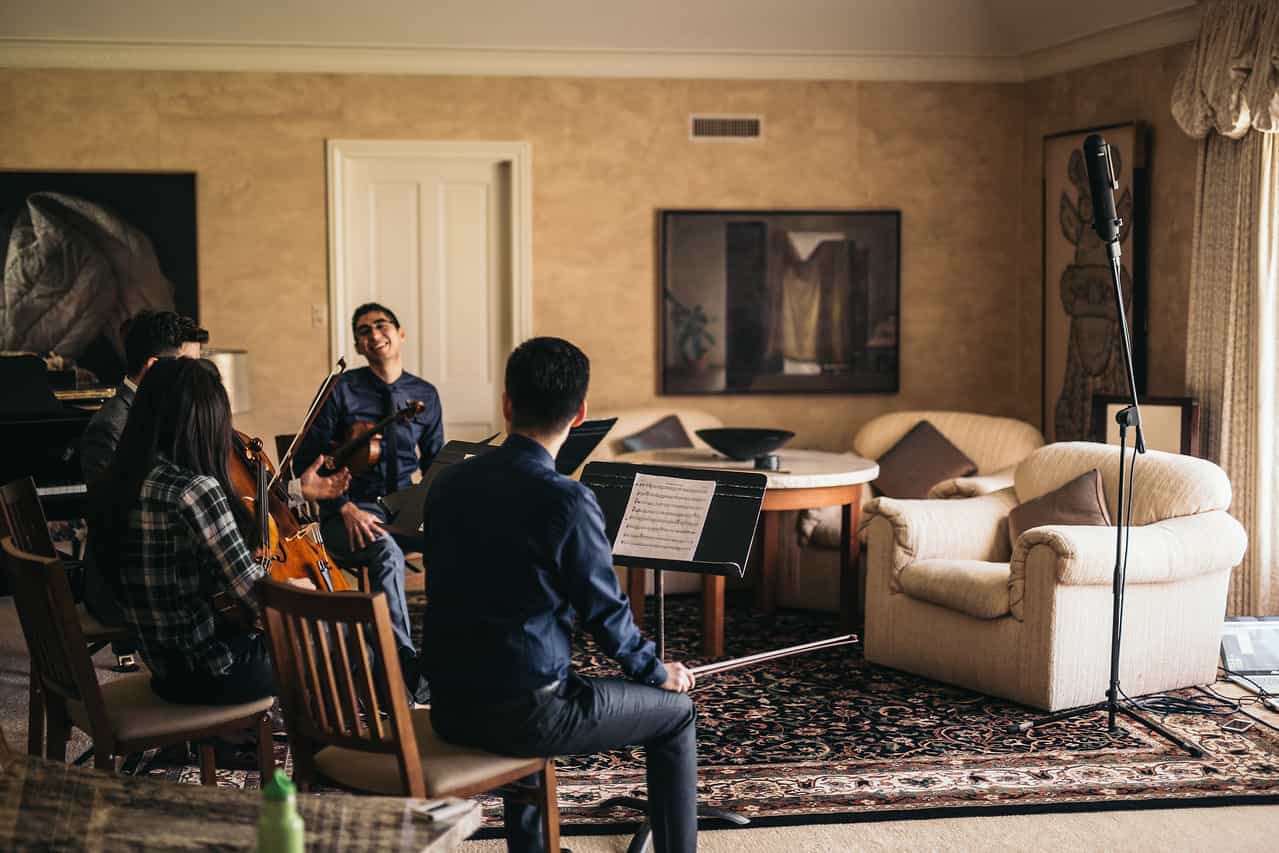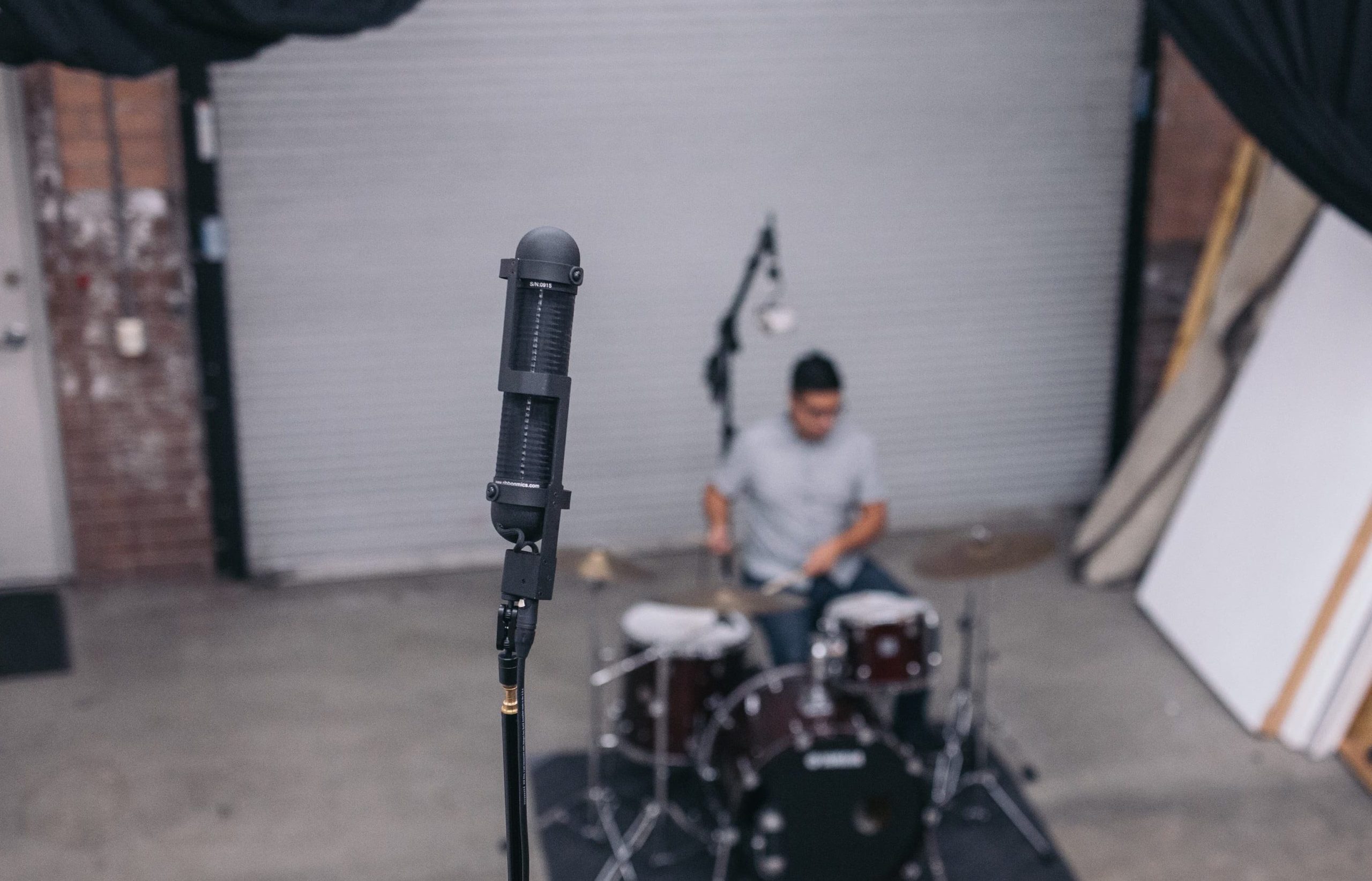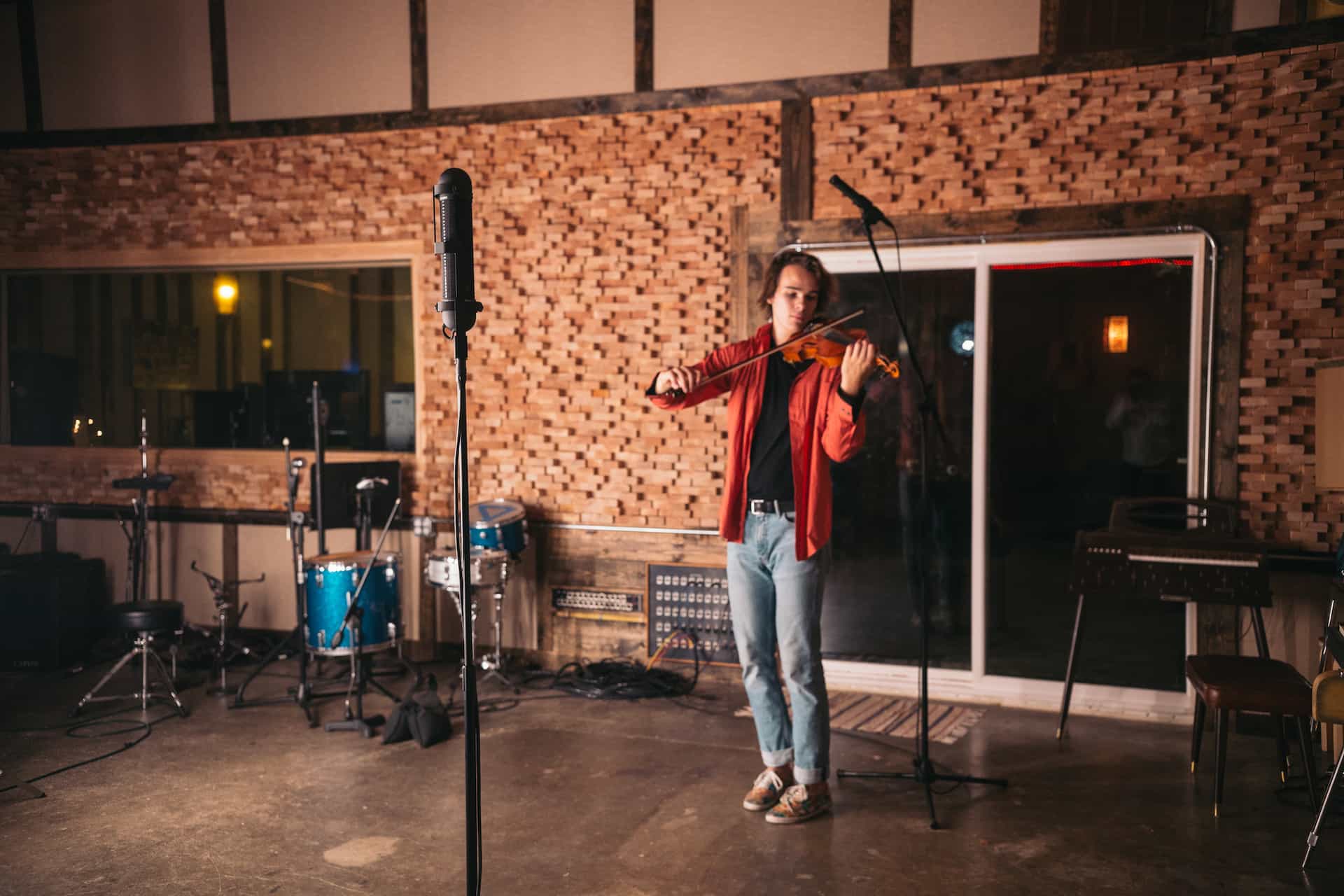Using Room Mics to Add Depth to Your Violin
Violin can often be a difficult instrument to record. The sound is produced from multiple areas of the instrument: where the bow makes contact with the strings, the f-hole, and the whole body resonating. But it is very rare that we listen to a violin with our ear directly on top of the instrument unless you’re the one playing it. When we think of violin, we often think of the long reverb tails and the mountain-like dynamics of the instrument.
In these audio samples below, violinist, Jaylene Chung, records in a semi-reverberant studio with two different mics— one close and one at a distance. In the close example, Jaylene is recorded with an AEA N8 from two feet away. In the distant example, an R88 captures the natural room ambience from about 15-feet back. Both mic positions produce very different sounds, but together they give you numerous options when mixing.
Miking Violin With the N8 For Focus
In this close-miking example, the violin has detail and focus that truly captures the direct sound of the instrument. In many mixes, this track would work on its own. Because the room is reverberant, some natural room tone is picked up in the mic due to the back side of the N8. However, it is lacking the full scope of the room which can be an important element for certain styles of music.
Miking Violin With the R88 For Natural Reverb
In this example, the R88 is positioned about 15-feet away from Jaylene. There is very little direct sound while the pure ambience of the space is captured. The reverb tails are apparent and huge. On its own, this track may sound washy, but when combined with the close-mike, it can immerse the listener like no other.
Close Mic and Room Mics Blended on Violin
The final example is a blending of the close microphone and the distant microphone. The direct mic gives the detail and focus of the violin while the distant mic captures the sound of the space and natural reverb. Together, the depth of the two tracks could not be replicated by just a single microphone. By adjusting the level of the R88 room mic, you can manipulate the size of the space to make it sound larger or smaller depending on how you want it to fit into the context of a mix.
Where to Position?
There are no hard and fast rules when miking an instrument at a distance other than to make sure that all of your microphones are in phase. When positioning a microphone at a distance, avoiding phase issues is normally not too difficult.
One technique that we follow here at AEA is to follow your ears. As the musician plays, walk around the room and listen for one of three things:
1. An area where the instrument sounds good.
2. A position where the treble-to-bass ratio is equal. That is where the frequency response of the source sounds balanced.
3. Where the natural reverb in the room sounds nice.
It is in one of those three places where we recommend placing your room mic.
In most instances, we recommend far-field ribbon mics when picking a room mic because they retain a solid bass response at distances of over 10 feet from the source. This allows greater flexibility when positioning your mic in the room.
The Glue in Recording
Both the drum and trumpet examples featured the R88 stereo mic in positioned as a room mic. The same effect can be achieved with a pair of almost any AEA mic in a stereo configuration. Even a single mono ribbon mic can work effectively as a room mic if placed in the right position. And no matter the instrument, this technique can be applied.
Capturing a room’s sound can be the glue that holds your recording together while giving you limitless options when creating your final mix.


